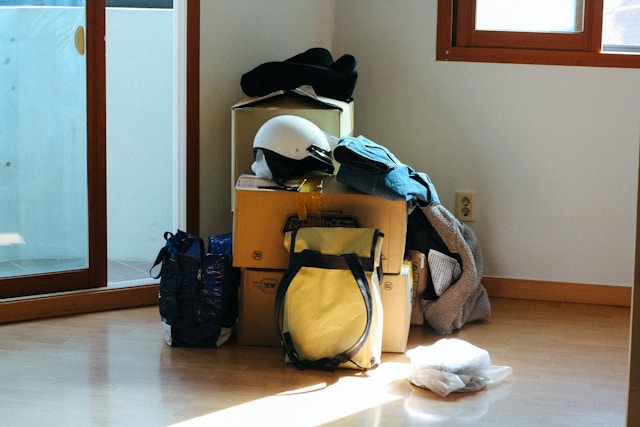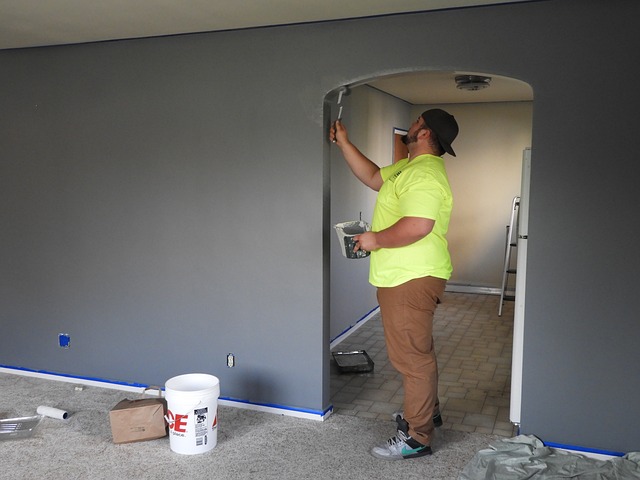This is a sponsored guest post.

A major move can be one of the most exciting yet mentally taxing transitions in life. Whether it involves shifting to a different city, a new neighborhood, or even a different state, the process carries a whirlwind of emotions and responsibilities.
While the idea of settling into a new home holds promise, the steps required to get there often include a mix of stress, chaos, and overwhelming decisions. In the middle of packing, forwarding addresses, coordinating logistics, and balancing work or family commitments, many people find their routines disrupted and their patience tested.
This is especially true for those relocating from or to fast-paced urban environments like Phoenix, AZ, where timing and coordination play a crucial role in the success of the move.
Maintaining a sense of structure and emotional stability during this period requires more than just a checklist—it demands a strategic approach to organization, mental clarity, and decision-making.
With thoughtful planning and practical execution, the moving process can become less daunting, more manageable, and even enjoyable. The goal is to avoid burnout and preserve peace of mind through proactive preparation, timely execution, and continuous mindfulness.
Trusting the Right Professionals for a Smooth Transition
One of the first steps in reducing stress during a move is to decide whether to handle the process independently or hire professionals. For those balancing busy schedules or facing long-distance transitions, enlisting expert help can dramatically reduce the logistical burden. Instead of struggling with disassembling furniture, renting trucks, and navigating unfamiliar roads, professional movers handle these challenges with experience and efficiency.
For those in need of reliable support, get in touch with local Phoenix, Az long distance movers to ensure a hassle-free experience. Professional moving services not only bring muscle and transportation but also a structured methodology that can help keep the entire operation on track. From providing packing materials to coordinating timelines and handling delicate items with care, these services streamline what could otherwise become an unpredictable ordeal.
Start Early and Create a Tailored Moving Timeline
Organization during a big move begins with timing. As soon as a move is confirmed, a structured plan should be set in motion. Creating a personalized moving calendar can help break down the process into digestible steps, with designated tasks spread out over weeks or even months. This prevents the common pitfall of last-minute packing, which often leads to disorganization and overlooked items.
Begin by establishing a “moving day” and work backward to allocate specific dates for packing each room, canceling utilities, donating unused items, and confirming logistical details. A well-planned timeline ensures that progress feels manageable and prevents the accumulation of multiple stressful tasks in the final days. As each milestone is completed, the growing sense of accomplishment helps reinforce mental calmness.
Declutter Before Packing: A Fresh Start Begins Now
The fewer items that need to be transported, the easier and cheaper the move becomes. Decluttering is an essential early step in ensuring a smooth transition. It’s the perfect opportunity to reevaluate possessions and decide what truly adds value to daily life. Items that have not been used in years, are broken, or hold no sentimental significance can be sold, donated, or responsibly discarded.
Approach each room with a minimalist mindset. Categorize belongings into “keep,” “donate,” “sell,” and “discard” piles. This categorization not only lightens the moving load but also helps reset priorities and simplify future routines in the new home.
Labeling and Inventory: The Power of Clear Categorization
A commonly overlooked yet highly effective organizational strategy during a move is detailed labeling and inventory management. While it may seem time-consuming at first, clearly labeling every box by room and contents helps avoid chaos during unpacking. Use color-coded stickers, bold markers, or pre-made labels to create a systematic identification system.
Additionally, maintaining a digital or written inventory of packed items serves as a valuable reference. In the event something goes missing or gets misplaced, having a list allows for quick tracking and accountability. For fragile items, mark boxes with “fragile” indicators and include notes about proper handling. Labeling also helps movers understand where boxes should go upon arrival, minimizing confusion and backtracking.
Maintain Daily Routines to Reduce Emotional Disruption
A major relocation often disrupts everyday habits, from morning rituals to evening downtime. While some change is inevitable, maintaining a semblance of routine can ground emotions and reduce anxiety. Even simple practices like morning coffee, evening walks, or reading before bed can serve as anchors in the storm of change.
Scheduling time for regular meals, short breaks, and rest is just as important as packing and coordination. Overexertion leads to burnout, which compromises both physical energy and mental well-being. Moving is a marathon, not a sprint—preserving health and energy levels is vital.
Pack an Essentials Bag for Immediate Comfort
Upon arrival at the new home, finding basic necessities can feel like searching for a needle in a haystack. To avoid this scenario, prepare an essentials bag or box that includes items needed during the first 24 to 48 hours. Think of it as a survival kit containing daily necessities like clothing, toiletries, chargers, important documents, snacks, and basic cleaning supplies.
If moving with kids or pets, the essentials kit should also include their specific needs—favorite toys, food, medications, and comfort items. This thoughtful preparation can greatly reduce stress on the first night and give everyone a softer landing in the unfamiliar environment.
Emotional Support and Communication Matter
Beyond logistics, a major move also takes a toll on emotional health. Feelings of sadness, anxiety, excitement, and uncertainty often co-exist, creating an emotional rollercoaster. It’s crucial to acknowledge these feelings without judgment and allow room for expression.
Keeping open lines of communication with family members or roommates can help ease tension and foster cooperation. Whether moving solo or with others, discussing expectations, worries, and responsibilities leads to fewer misunderstandings.
Additionally, leaning on a support network—whether friends, neighbors, or colleagues—can provide emotional encouragement and practical help. Even a simple check-in call or a shared meal can act as a stabilizing force during the transition.
The upheaval of a big move can test one’s patience, organization, and resilience. But with the right strategies in place, it can become an opportunity for growth, renewal, and a smooth transition to the next chapter. Staying organized through timelines, labeling, and decluttering—while prioritizing emotional wellness—ensures that the experience is not just
bearable but ultimately empowering.

Hi there! I am Emily Evert, the owner of Emily Reviews. I am 28 and live in a small town in Michigan with my boyfriend Ryan and our two pugs. I have a large family and I adore my nieces and nephews. I love reading memoirs, and learning about child development and psychology. I love watching The Game of Thrones, Teen Mom, Sister Wives and Veep. I like listening to Jason Isbell, John Prine, and other alt-country or Americana music. I created Emily Reviews as a creative outlet to share my life and the products that I love with others.
This post currently has no responses.





















Leave a Reply